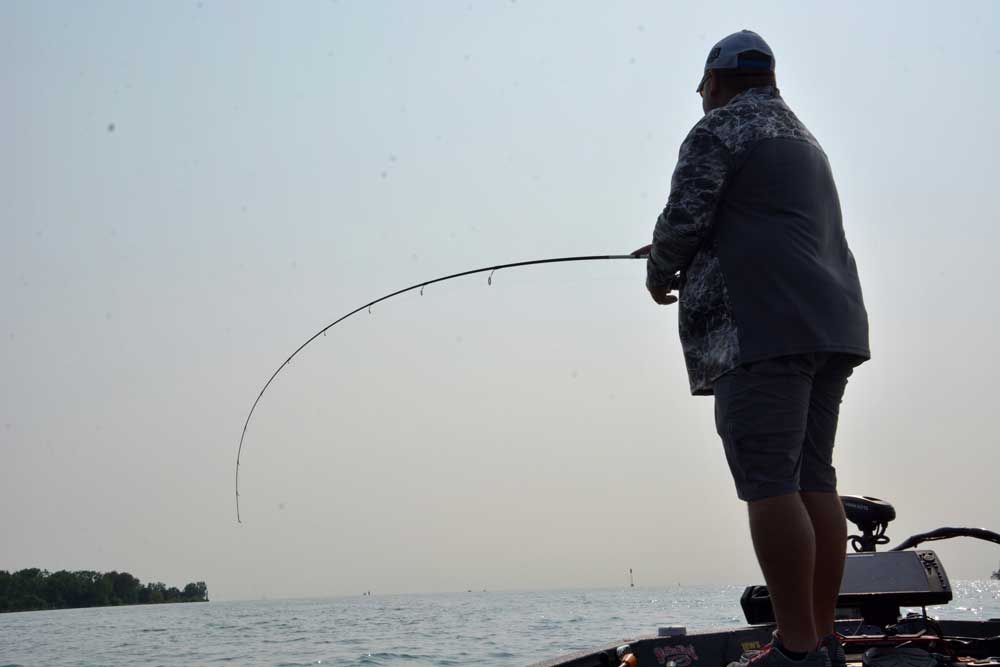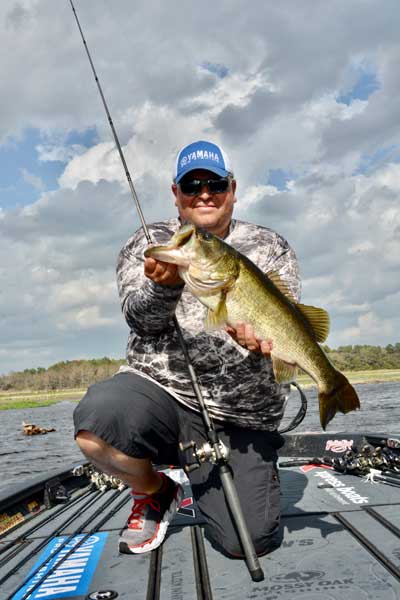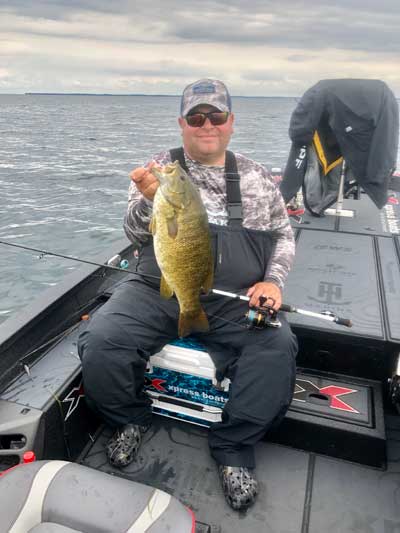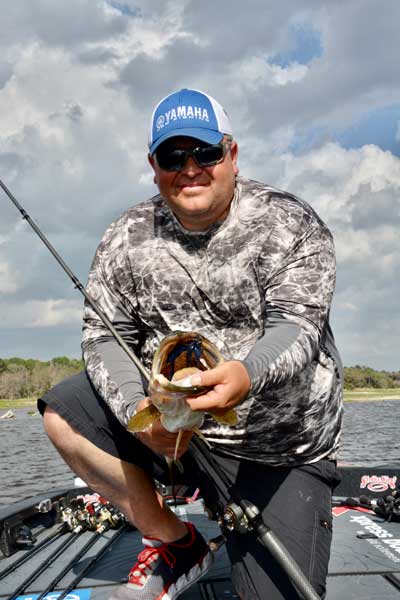Heath Wood

Have you ever wondered what kind of setups professional fishermen use when fishing specific lures? Questions such as what lure is the best to catch big bass, when is the best time to use certain lures, and more specific queries such as what type of rod is used for a crankbait, or what size line should be used for a spinnerbait. And one of the most asked questions among fisherman is a fluorocarbon, monofilament, or braided line better? When should each one be used?
In search of answers to these questions, I recently sat down with Elite Series angler and Mossy Oak Fishing Team member Bill Lowen who is one of the best at sharing his knowledge of fishing to help others become more successful.
Lowen is known as one of the most consistent anglers on the Elite Series tour, even gaining the nickname among his fellow anglers as “Dollar Bill” because of consistently being in the money at the end of a tournament. Lowen prides himself as being a great mentor in the sport along the way.
“I didn't start this career to be the best angler in the world; I started this career to be the best ambassador to the sport that I can be," said Lowen. He has done just that, Lowen can often be seen on TV, in magazines, and all over the web, sharing tips and tactics for being a better angler.
While inquiring with Lowen, I asked about the most popular choices of lures, when is the best time to use them, what type of rod and reel he uses, and what choice of line he typically uses for each specific one. By Lowen answering these popular questions, beginning fisherman and experienced anglers alike can sharpen their skills.
Top Water/ Jerkbaits
 When using a jerk bait or other topwater lures, anglers can expect an exciting kind of fishing. Lowen says that for him, this type of fishing is mostly done during the spring of the year or when he knows that there is a lot of smallmouth bass where he is fishing. As for Lowen's setup when throwing topwater lures and jerk baits, he says that he typically uses 10 or 12-pound test, in the new Strike King Tour Grade Fluorocarbon line on a 6'10 to 7' rod.
When using a jerk bait or other topwater lures, anglers can expect an exciting kind of fishing. Lowen says that for him, this type of fishing is mostly done during the spring of the year or when he knows that there is a lot of smallmouth bass where he is fishing. As for Lowen's setup when throwing topwater lures and jerk baits, he says that he typically uses 10 or 12-pound test, in the new Strike King Tour Grade Fluorocarbon line on a 6'10 to 7' rod.
"I like a little bit stouter jerk bait rod than most anglers," said Lowen. "I like the Lew's Custom Speed Stick, 6' 10", light action spinnerbait rod when using jerk baits," added Lowen. He went on to explain that these rods are something that he seemed to get comfortable with throughout years of fishing.
Crankbaits
A crankbait is one of the most popular lures among fishermen. Lowen says that he typically has a crankbait tied on all year long. However, he does have his favorites specifically for what time of year he is fishing.
"During the spring, it is typically a flat-sided bait due to the colder water and the way they produce a tight wiggle," said Lowen. As the year goes on and temperatures begin to warm, Lowen states that he will use a square bill type crankbait that can produce a lot of action. Lowen’s setup on crankbaits consists of 12 -pound fluorocarbon line when it is calmer waters, then as he transitions into fishing a square bill in warmer waters, he will use 10-pound to a 20-pound fluorocarbon line.
"This all depends on how shallow I want my lure to go," said Lowen. Using different pound test of line depends on how deep or how shallow the lure will go. As for what rod and reel choice Lowen is using, again depends on what type of crankbait he is using.
"In the spring when I want to reel my lure in slow, I will use a Lew's BB1 casting reel with a 5.1:1 gear ratio, then as I get into warmer waters, I will use a Team Lew's Lite Speed Spool, which is a 6.8:1 gear ratio," said Lowen. By using a reel with a higher gear ratio, one can reel a lure at a faster pace, creating more action that Lowen prefers when fishing warmer temperatures.
Spinnerbaits
 "Using a spinnerbait for me is more like hunting instead of fishing," said Lowen. "I like a 7' medium/heavy action rod, maybe up to a heavy action rod, depending on how big that spinnerbait is."
"Using a spinnerbait for me is more like hunting instead of fishing," said Lowen. "I like a 7' medium/heavy action rod, maybe up to a heavy action rod, depending on how big that spinnerbait is."
When throwing spinnerbaits, Lowen will most often use a high-speed casting reel, such as the Lew's Hyper Mag, which is a 7.5:1 gear ratio.
"Typically I like a high-speed reel when using a spinnerbait so that I can move the bait along fast if I want, or crawl it if I want; it is a reel that I can cover a lot of ground with," said Lowen. He then added that he usually uses a 20-pound test, also in the Strike King Tour Grade fluorocarbon line.
Plastic Tubes, Worms, Swimbaits
When using so-called plastics such as tubes, worms, or swimbaits, the angler will most likely be doing short cast along structures, grass, etc., most often accomplished by flipping.
"Typically for me, when using a flipping rod, whether I'm using a tube, jig or a worm, any type of tight bait I am flipping, I will use a longer rod such a 7' 6", Magnum/Heavy Cover, Custom Speed Stick from Lew's," said Lowen.
This type of rod is a very lightweight rod and very sensitive, which is perfect for this type of fishing. The reel choice for Lowen when flipping a longer rod is also the Team Lew's Lite Speed Spool in a 6.8:1 gear ratio.
"I've never been a big fan of a high-speed reel on my flipping rod," revealed Lowen. He then added, "the last few years guys have transitioned into a high-speed reel, however to me, I seem to winch on them too hard when I have a higher speed reel."
 He ended by saying that he feels pretty in tune while flipping, and by not using a higher speed reel, he doesn't overpower the bait.
He ended by saying that he feels pretty in tune while flipping, and by not using a higher speed reel, he doesn't overpower the bait.
"My theory with line is when flipping I always want to use the lightest line I can without hurting myself," said Lowen. "The reason I say that is I feel like the more action you get out of your baits, the more bites you're going to get."
Lowen states he most often uses 17 to 20-pound test, fluorocarbon line. "When I'm flipping pretty clear water, I will use 17, when I am flipping in brush, or docks, or somewhere I am going to get broke off, I will then use a 20 or even 25-pound test line.”
Choosing The Right Line
One of the most asked questions among anglers is, how do I know what the best line to use is? Many beginning anglers want to know when to use monofilament, fluorocarbon, or braid and why or if it makes a difference when fishing. For Bill Lowen who spends a lot of time on the water each year, he says that he fishes 90 percent of the time with fluorocarbon.
"The benefits of fluorocarbon outweigh that of monofilament, with sensitivity, less stretch, and you get an overall sense of what is going on with your bait and better bite detection, and you get a better hookset" says Lowen.
Many anglers don't understand what the difference between monofilament and fluorocarbon is. Lowen explained that fluorocarbon line sinks, and that it is a hard, dense material. As compared to monofilament line which floats. For example, Lowen says that you wouldn't typically want to use fluorocarbon when topwater fishing, because it sinks. He suggests that the monofilament line be used when topwater fishing, such as a jerk bait or anytime you want to keep your lure on the surface. As for fluorocarbon, Lowen says to use when using any of your baits, such as crankbaits, spinnerbaits, chatter baits, jigs or worms, that is where you will want to use fluorocarbon. As for braided line, Lowen tells that he will typically use braid when throwing his swim jigs, or when using a frog or dense fishing vegetation. Even though each has their benefits, Lowen says that he prefers 90 % fluorocarbon, 5% Monofilament, and 5% braid.
Whether it be hunting or fishing, Bill Lowen loves to pass on his knowledge to the future generation. "When I got the opportunity to join the Mossy Oak Fishing Team, it was so exciting for me, because I remember watching those old Mossy Oak shows with a Dad and son walking down a dirt road kind of thing and to me, that's what Mossy Oak is all about, they love to pass it on to the next generation," said Lowen.
Passing it on goes in a full circle, thanks to great ambassadors to the outdoors such as Bill Lowen, many anglers will be more successful while on the water.



























